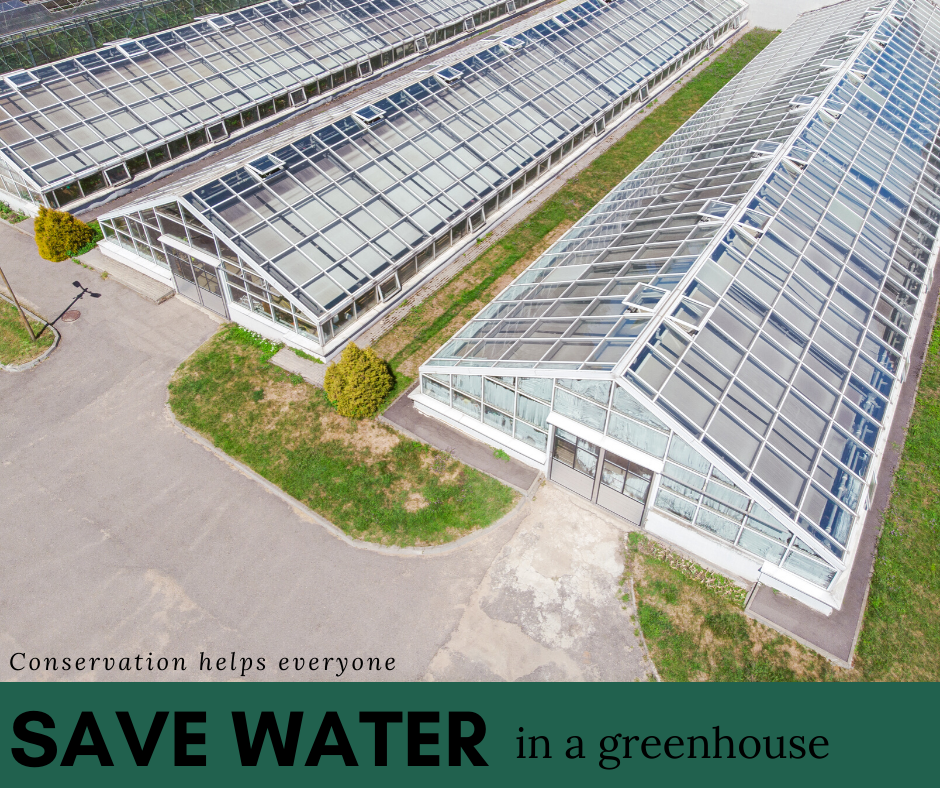
Water scarcity is a global concern, and sustainable agriculture practices are essential for addressing this issue. Greenhouse growing offers a promising solution by significantly reducing water consumption while maximizing crop productivity. In this blog post, we will delve into the water-saving benefits of greenhouse gardening, including efficient irrigation systems, reduced evaporation, and improved water management practices. Join us as we explore how adopting greenhouse techniques can help conserve water and promote sustainable agriculture.
Precise Irrigation Systems: Greenhouses enable precise control over irrigation, ensuring that plants receive the right amount of water at the right time. Drip irrigation, for example, delivers water directly to the plant roots, minimizing waste through evaporation and runoff. By providing water directly to the root zone, greenhouse growers can reduce water usage by up to 70% compared to traditional open-field irrigation methods.
Reduced Evaporation: The enclosed environment of a greenhouse reduces water loss due to evaporation. Unlike outdoor farming, where water can quickly evaporate under the sun's heat, the covered structure of a greenhouse traps moisture, creating a more humid microclimate. This decreased evaporation means that plants can make better use of the water provided, resulting in improved water efficiency.
Controlled Climate and Transpiration: Greenhouses allow for precise control over temperature and humidity levels. By optimizing these factors, growers can manage plant transpiration more effectively. Transpiration is the process through which plants release water vapor into the air. With proper climate control, greenhouse growers can minimize excessive transpiration, reducing water loss without compromising plant health.
Efficient Water Management: Greenhouses promote efficient water management practices. By closely monitoring and measuring water usage, growers can identify potential inefficiencies and make adjustments accordingly. Techniques such as using moisture sensors, monitoring soil moisture levels, and implementing water-saving technologies enable precise water management. This ensures that plants receive adequate moisture while minimizing water waste.
Recycling and Reusing Water: Greenhouse systems can incorporate water recycling and reuse techniques. Capturing and treating excess irrigation water, also known as runoff, allows growers to reuse it for future irrigation needs. This closed-loop system minimizes water waste and promotes resource conservation. Additionally, capturing rainwater from the greenhouse roof can further supplement irrigation needs, reducing reliance on freshwater sources.
Improved Crop Productivity: By providing plants with optimal growing conditions, greenhouses maximize crop productivity per unit of water consumed. The controlled environment enables plants to reach their full potential, resulting in higher yields with fewer water resources. This improved efficiency not only conserves water but also enhances the economic viability of agriculture operations.
Reduced Environmental Impact: Greenhouse growing's water-saving benefits extend beyond conservation. By minimizing water usage, greenhouse farmers also reduce the environmental impact associated with water extraction and irrigation. The decreased reliance on freshwater sources helps preserve natural ecosystems, protect aquatic habitats, and maintain overall ecological balance.
With the economy on everyone's minds, finding ways to cut expenses as well as converse precious resources is good for both the earth and for your bottom line. Water is vital to plant growth, but in many areas can be in short supply and high in cost.
Greenhouse growers use as much as 61% less water than outdoor farmers. This is due to reduced evapotranspiration rates, drip and flood irrigation methods, closer crop spacing, and shorter crop cycles. Growers also cite sustainability, more frequent harvests, ease of pest control, and more control over their growing environment as additional reasons they are choosing to move crops traditionally grown outdoors in. Water-borne disease is also easily reduced.

Just within the United States, 38 percent of our fresh water consumption used for crop irrigation. Worldwide, 80 percent of our fresh water supply goes to crops. Irresponsible watering practices can create a huge strain on water supplies, can contribute to disease, and can affect the quality of the water supply.
Growers with an eye towards the future are more and more turning to greenhouses to protect their crops, protect our natural resources, and protect future generations’ world. As many areas face water shortages, decreasing water loss when tending for crops is vitally important.

A recent study of tomato growers showed, pound for pound of yield, greenhouse producers used approximately 61% less water than an open-air farm. Additionally, frequently cycling crops gives more harvests, while having fewer heavy-watering days within each cycle.
Within the greenhouse, water quality can be managed with ultraviolet light purification, which reduces instance of disease and pathogens. Water filtration can also help growers in areas where groundwater has increased salt intrusion or heavy mineralization.

Gothic Arch Greenhouses has everything the commercial grower needs to start saving resources and bring bigger yields. From greenhouses to equipment, we can help you move your crops indoors, while still catching sunlight for healthy plant development. Call our experts today to see what we can do for you. 800-531-4769.
